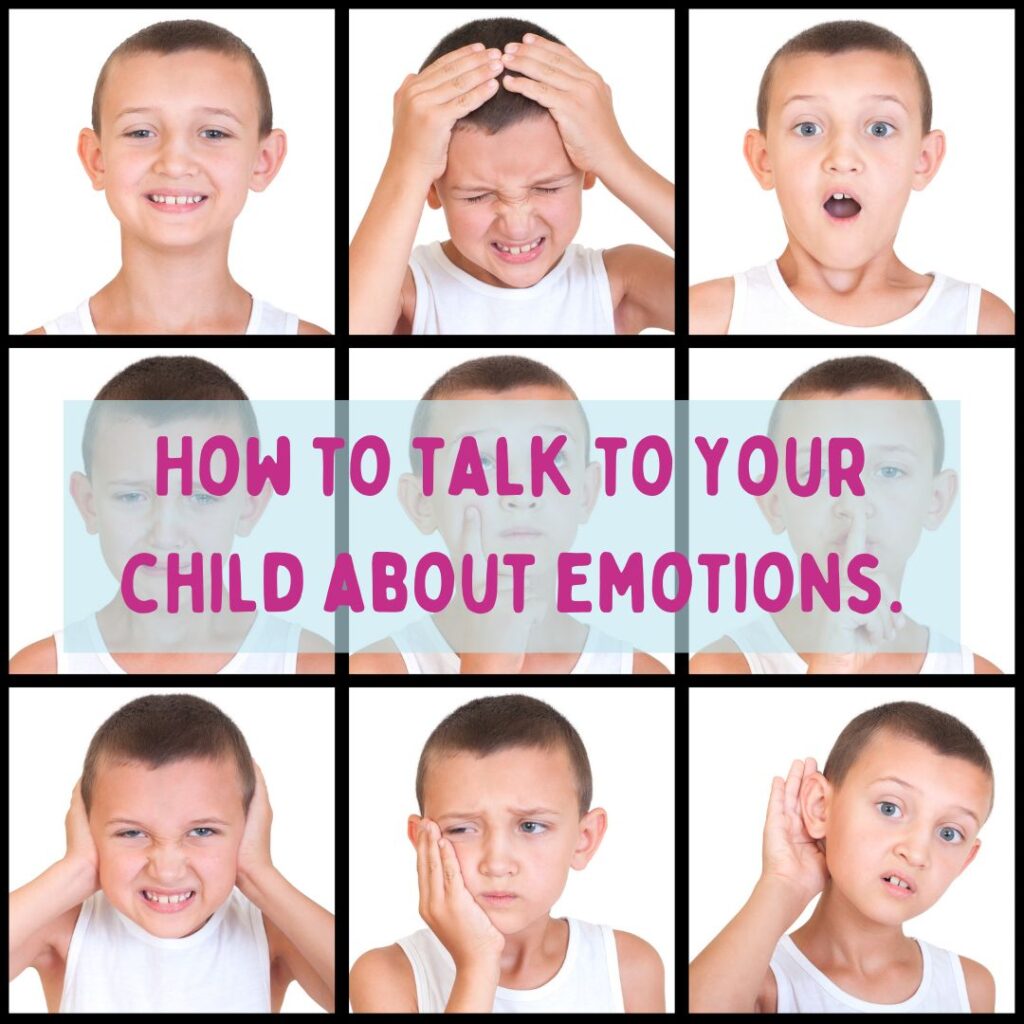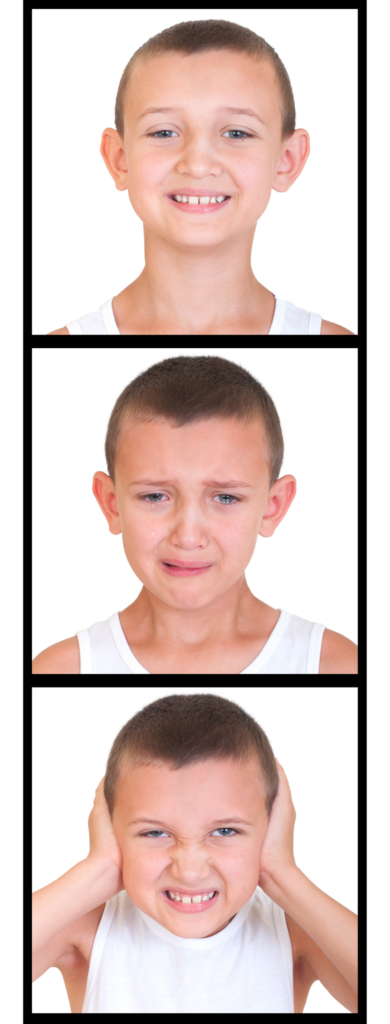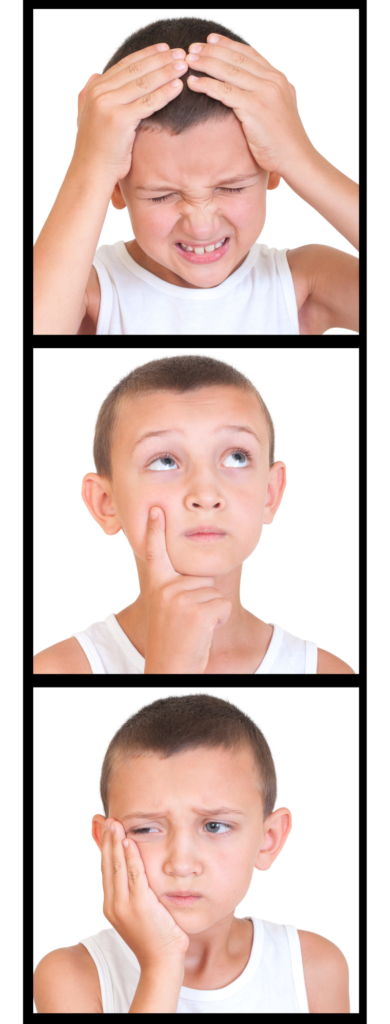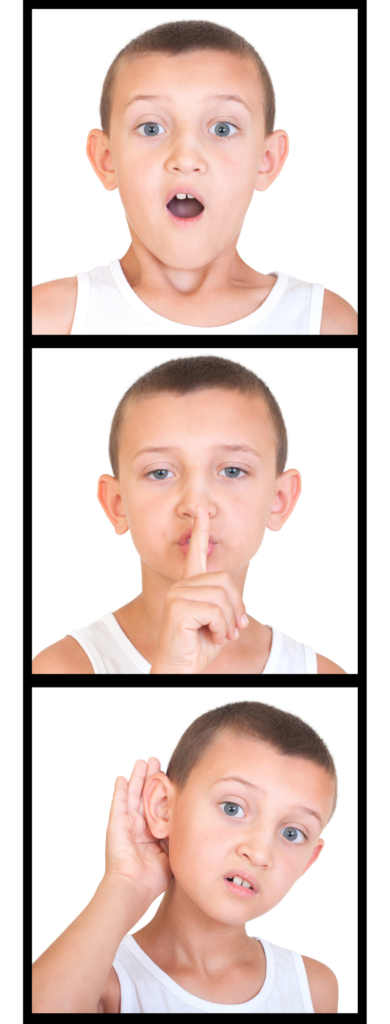How to talk to your child about emotions.

Have you ever watched your child have a meltdown over something completely innocuous (like the orange juice not being orange enough) and wondered what on Earth they’re doing? Well, the truth is that your child is probably feeling exactly the same! Little ones find big emotions very difficult to process. They may not understand what they’re feeling, or why they’re reacting to how they’re feeling. This is why it’s so important to talk about emotions with our little ones, to help them feel safe and aware of themselves (and it has the bonus of making those surprise meltdowns much easier to handle!)
Below are some ways to support your little one with understanding their emotions, as well as a few tips for calming them down!
Normalise talking about emotions by narrating your own.
Talk about how you’re feeling regularly. Whether it’s a positive emotion or a negative one, it’s helpful for your child to hear how you’re feeling and why. This helps them understand their own emotions and what causes them.
Name their emotions.
When they’re clearly feeling a strong emotion, whether positive or negative, let them know what they’re feeling. It might seem obvious that they’re angry or sad or excited, but they may not know that! Verbalising it for them helps give them the vocabulary to talk about it themselves. For example “I can see you’re angry because we can’t have ice cream for dinner” or “You look like you’re really excited to visit grandma”.
Validate feelings / show acceptance
It’s really important that we show our children that all emotions are normal and okay to feel. Talking about and acknowledging emotions (like we did in the previous paragraph) is fantastic for validating our children’s feelings. It’s important to make sure we don’t attribute positive or negative views on these emotions. For example, letting our children know that it’s okay to feel angry will help them acknowledge that feeling, rather than feeling guilty about it. This can be hard to do, particularly if (like me) you were raised to feel you should always ‘put on a brave face’ or not make a scene. That doesn’t mean we should tell our children it’s okay to throw a tantrum in public or hit people though, and that leads neatly onto our next paragraph:



Talk about the difference between feelings and behaviours.
While all feelings are valid and it’s important to accept how we and our children are feeling, there are behaviours which are not so great! It’s important to explain to our children that how we react to our emotions is important. Hitting, for example, is not a good way to respond to being angry, and screaming is not a good way to respond to being excited. We, as parents, need to support our children to recognise appropriate responses. For example “I can see you’re angry because we can’t have ice cream, but hitting is not okay because you might hurt someone. Let’s try stamping our feet instead”.
Modelling how you deal with these emotions is also fantastic as your child learns most by watching you. When you’re cross you could try “I’m frustrated that we’re running late, so I’m going to take some deep breaths to help me feel better.” And then show your little one how you take three deep breaths to help you. This shows them not only how you’re feeling, but also how you’re regulating yourself by taking deep breaths. Next time they feel frustrated, they are more likely to remember that and try it themselves (not that this will happen instantly, it definitely takes time, but each time gives them another chance!)
Use books to talk about how the characters are feeling.
Books are a fantastic way to begin conversations about emotions and how to deal with them. Taking about how characters are feeling is a really good way to discuss emotions in a calm environment where your little one can think clearly. It’s much harder to consider how you’re feeling in the moment! You can also make links between how a character is feeling and how your child has felt in the past. For example, “Have you ever felt like that? What made you feel like that? What did you do?”
This is also a fantastic way to consider how the character deals with the situation and what your child thinks of the reaction. Did they react in a good way? What do you think they should have done? This can be a great way for children to recognise ways of coping and calming down.
One book I would recommend for this is Becca Talemaimaleya’s ‘I Can Calm Down’ which gives lots of strategies to help your child calm themselves down, written in child friendly language and with lots of visuals. Definitely worth a read if you have a child who struggles to think of ways to calm down.
Nursery rhymes are also a great way to discuss emotions of characters. You can find out more here – Do Nursery Rhymes help our Children?
When to seek help:
If you’re still worried about your child and want more information about when to seek additional help, check out this blog – https://www.verywellfamily.com/when-do-child-behavioral-problems-require-professionals-1094789
If you’ve found this blog helpful, check out a few of the other ones I’ve written below. And if you’d like more individualised support, join my facebook group or instagram by clicking the icon!
Comments
One response to “How to talk to your child about emotions.”
[…] a previous blog post of mine – How to talk to your child about emotions – we talked about the importance of verbalising emotions and sharing our own feelings with […]